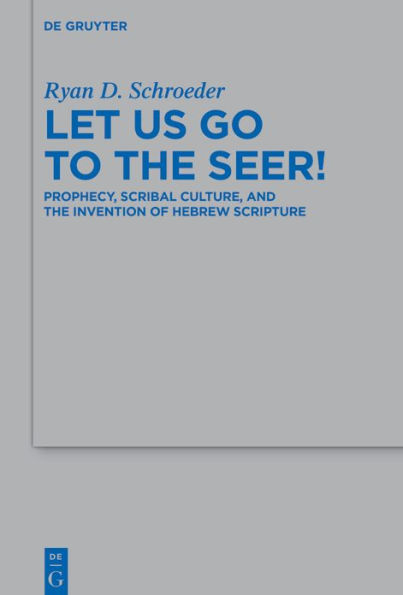Prophecy in the Hebrew Bible (“Old Testament”) has long been regarded as fundamentally different from the divinatory methods of ancient pagans: while the pagans sought out and solicited messages from the gods, the Hebrew prophets received revelation spontaneously, at the initiative of Israel’s deity. The trouble with this dichotomy between solicited and spontaneous revelation is that it overlooks or misreads a number of ancient sources, and it obscures the similarities between Hebrew and other societies of the ancient Middle East. In this book, Ryan D. Schroeder re-examines the evidence for prophecy both in the Hebrew Bible and in documents excavated in Israel/Palestine, Syria, Jordan, and Iraq since the late nineteenth century. He shows that prophecies were regularly solicited across ancient West Asia. Moreover, the spontaneity of Israelite revelation is largely a mirage produced by ancient Hebrew scribes and reinforced by modern scholars intent on establishing the uniqueness and superiority of “biblical” religion.
1146002789
Let Us Go to the Seer!: Prophecy, Scribal Culture, and the Invention of Hebrew Scripture
Prophecy in the Hebrew Bible (“Old Testament”) has long been regarded as fundamentally different from the divinatory methods of ancient pagans: while the pagans sought out and solicited messages from the gods, the Hebrew prophets received revelation spontaneously, at the initiative of Israel’s deity. The trouble with this dichotomy between solicited and spontaneous revelation is that it overlooks or misreads a number of ancient sources, and it obscures the similarities between Hebrew and other societies of the ancient Middle East. In this book, Ryan D. Schroeder re-examines the evidence for prophecy both in the Hebrew Bible and in documents excavated in Israel/Palestine, Syria, Jordan, and Iraq since the late nineteenth century. He shows that prophecies were regularly solicited across ancient West Asia. Moreover, the spontaneity of Israelite revelation is largely a mirage produced by ancient Hebrew scribes and reinforced by modern scholars intent on establishing the uniqueness and superiority of “biblical” religion.
117.99
In Stock
5
1

Let Us Go to the Seer!: Prophecy, Scribal Culture, and the Invention of Hebrew Scripture
305
Let Us Go to the Seer!: Prophecy, Scribal Culture, and the Invention of Hebrew Scripture
305Related collections and offers
117.99
In Stock

Product Details
| ISBN-13: | 9783111533162 |
|---|---|
| Publisher: | De Gruyter |
| Publication date: | 03/03/2025 |
| Series: | Beihefte zur Zeitschrift für die alttestamentliche Wissenschaft , #563 |
| Sold by: | Barnes & Noble |
| Format: | eBook |
| Pages: | 305 |
| File size: | 2 MB |
| Age Range: | 18 Years |
About the Author
From the B&N Reads Blog
